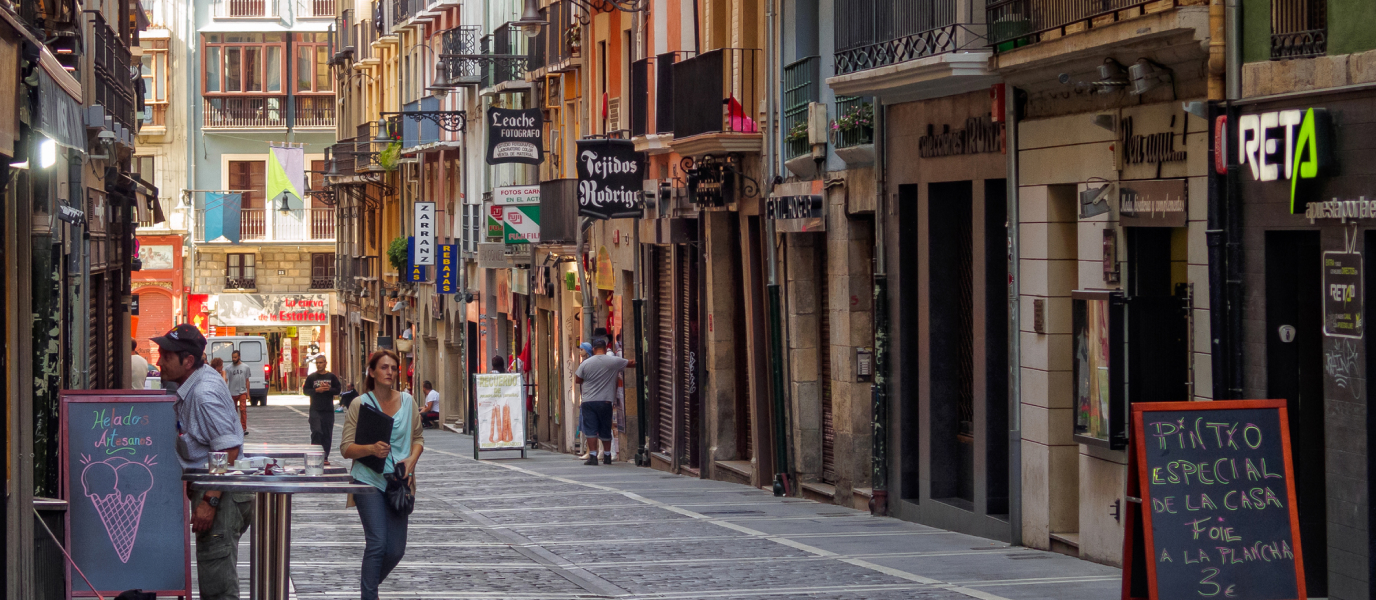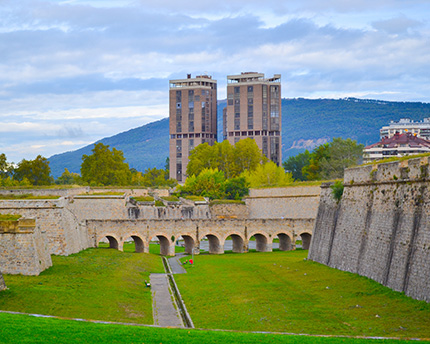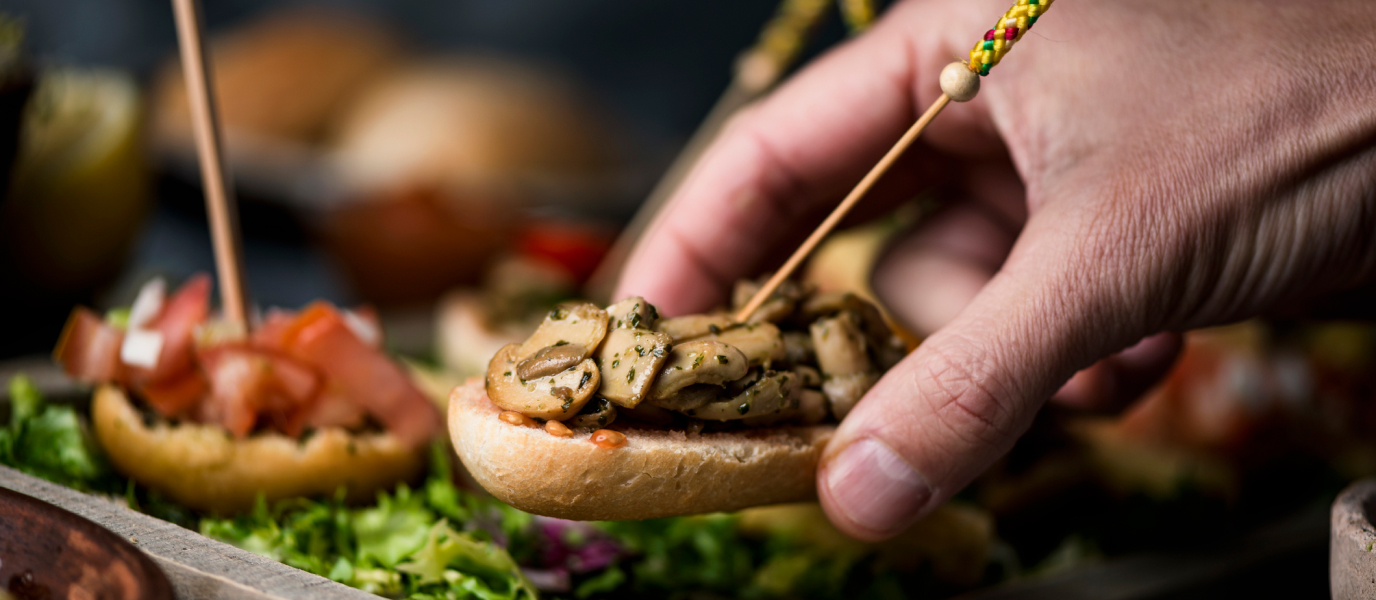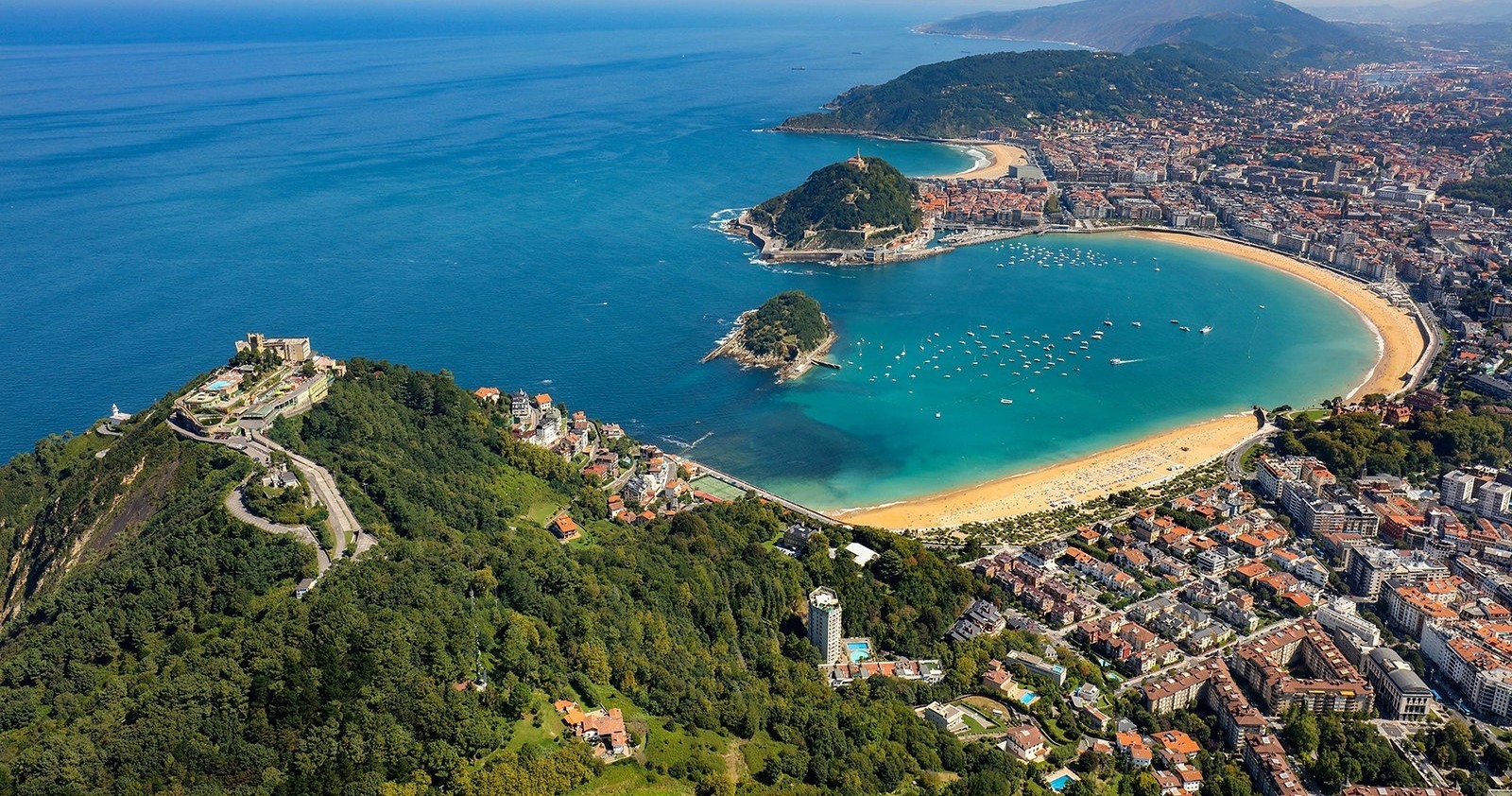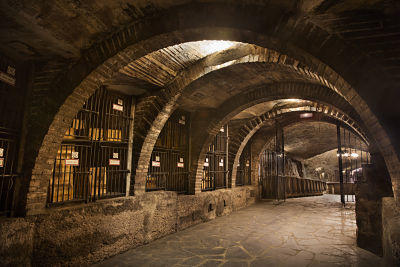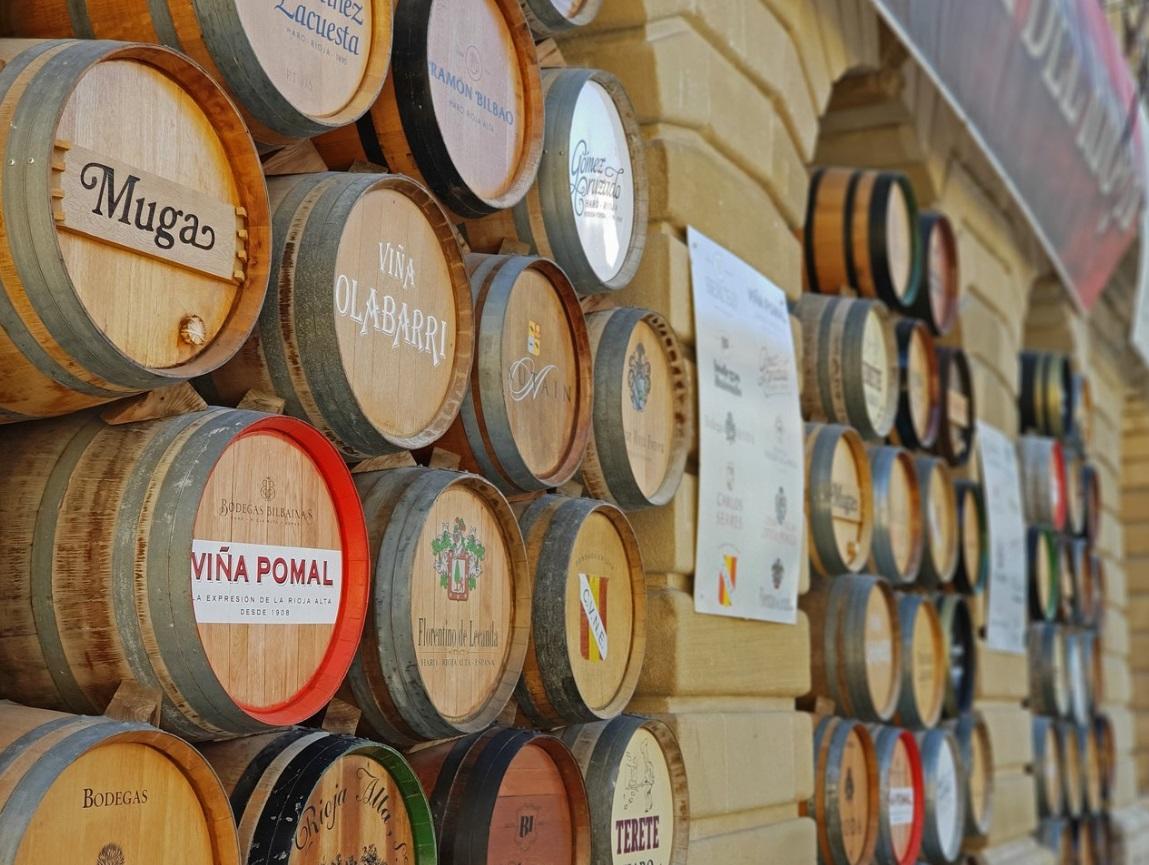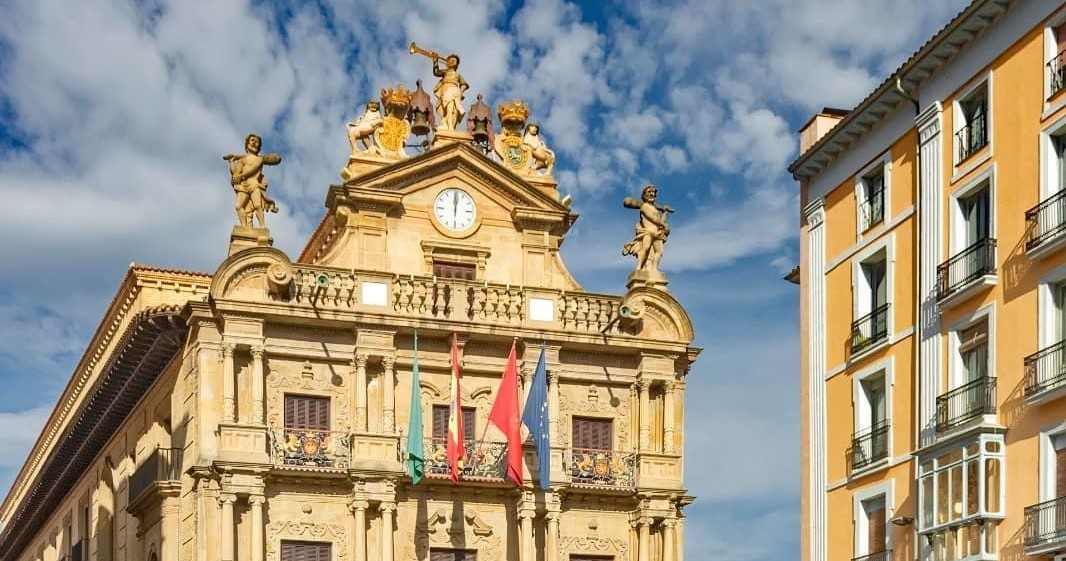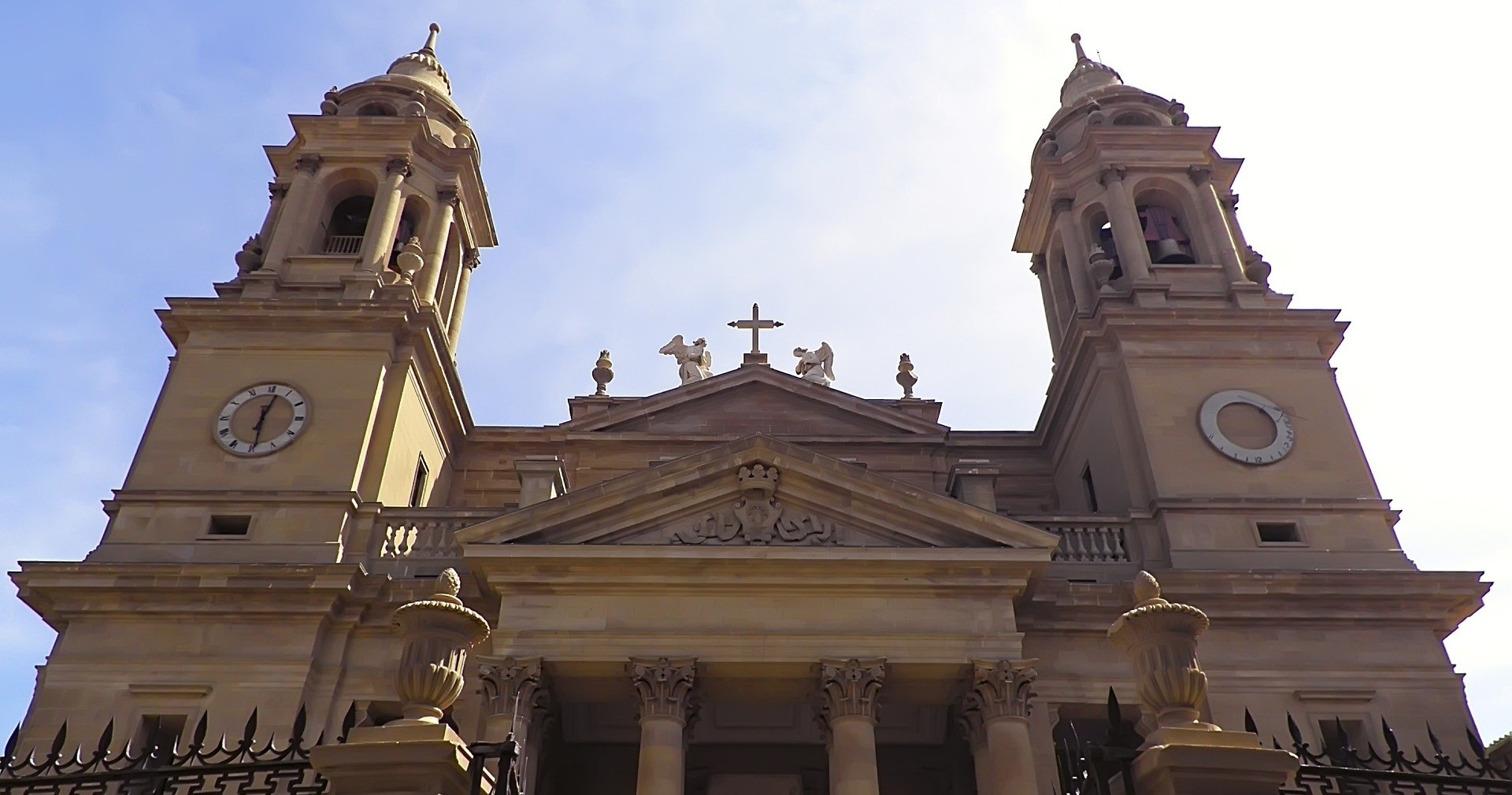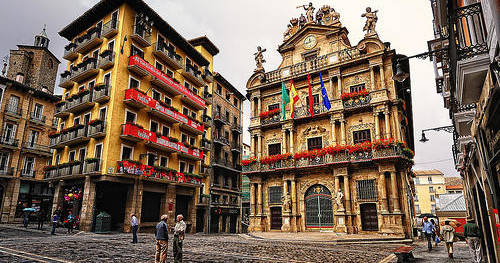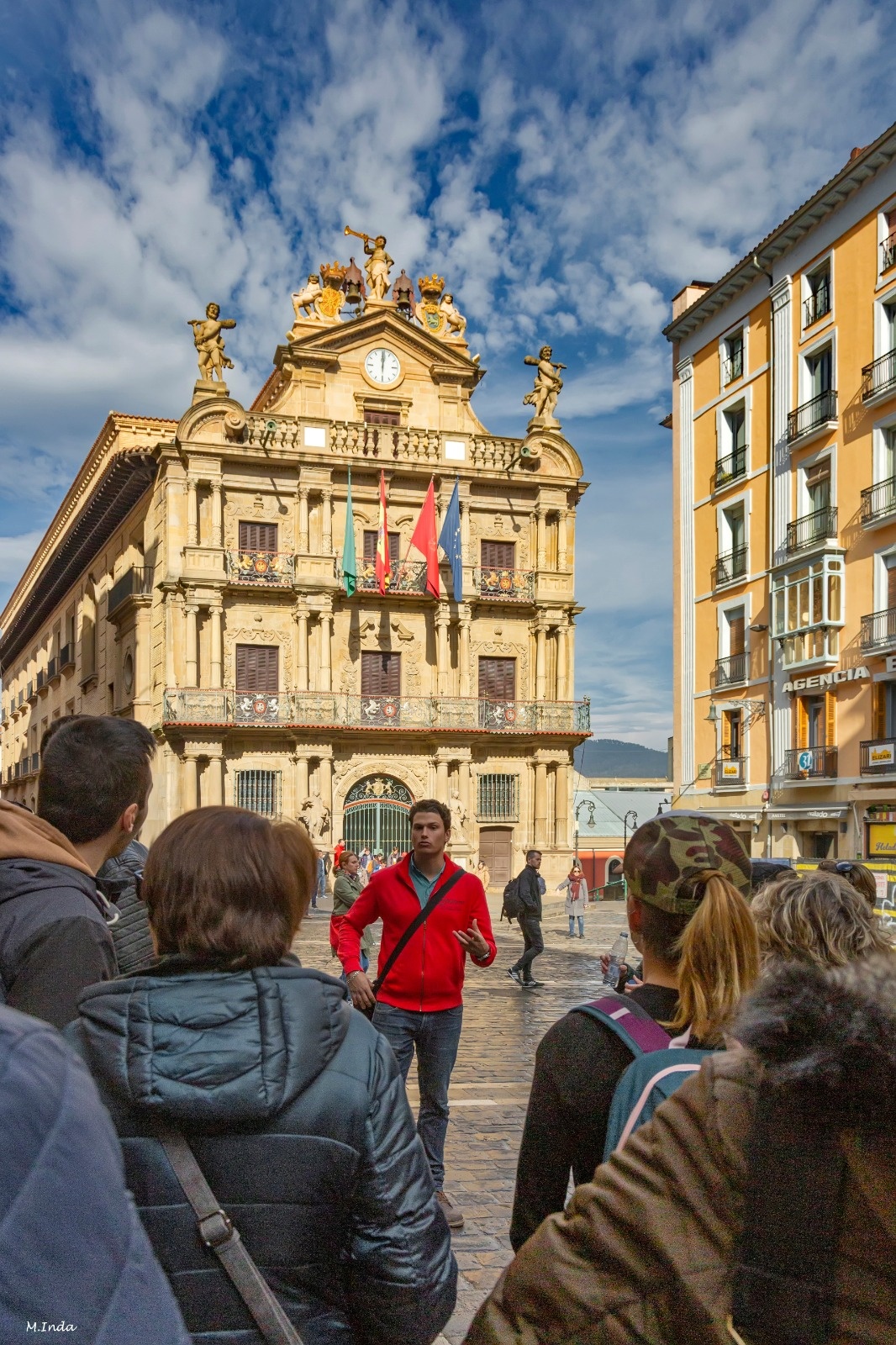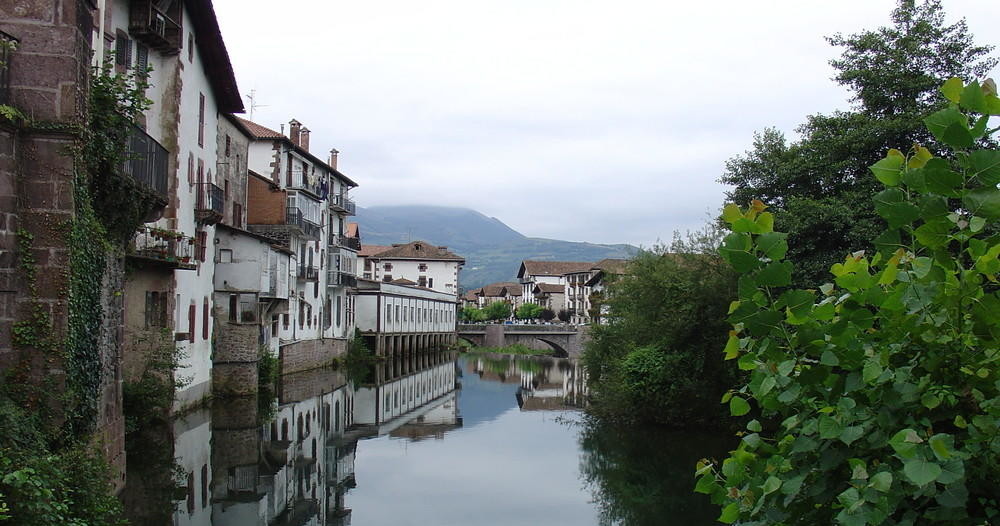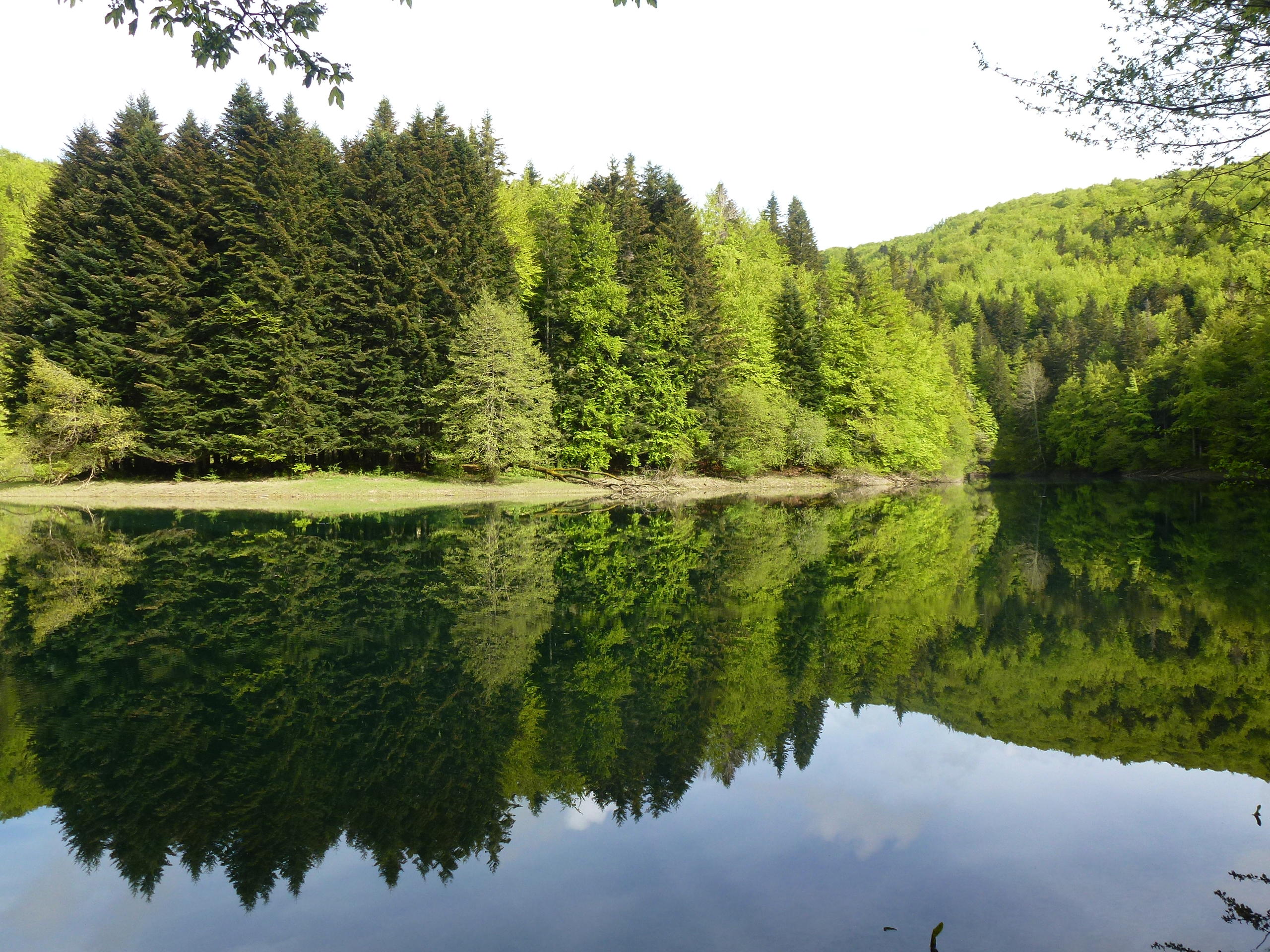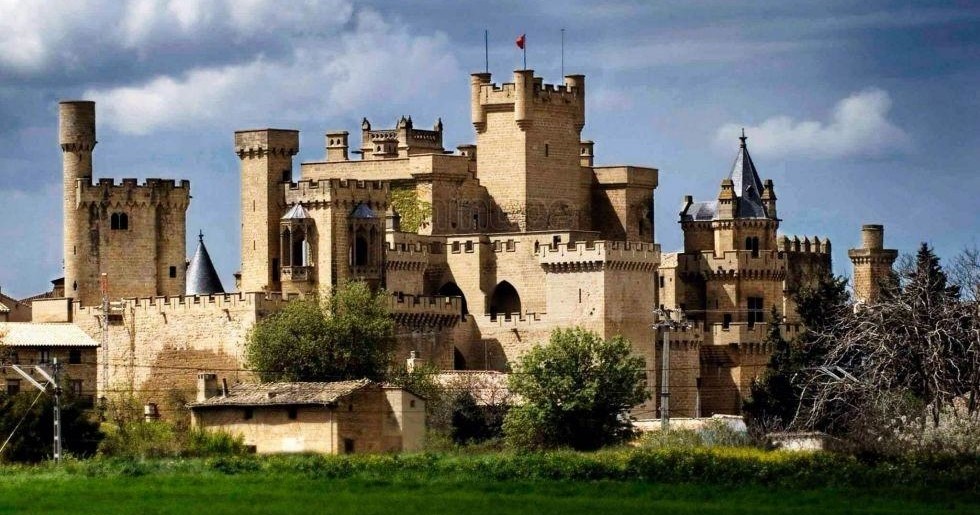With a length of around 250 metres, Estafeta is one of the longest streets in Pamplona’s Old Quarter and is situated near the Plaza del Castillo square, considered to be the heart of the capital of Navarra.
What makes it world famous is not its length but the fact that it is one of the most popular streets along the bull run route during the San Fermín festival. Estafeta is also home to many shops and some of the restaurants and bars where you can sample the best local cuisine. Along with Plaza del Castillo and San Nicolás, Calle Estafeta is one of the places par excellence for pintxos, beer and wine.
History and fame of Calle Estafeta
Calle Estafeta belongs to the Navarrería, one of the three urban settlements in the historic centre of Pamplona. Before being called Estafeta, this iconic street had other names over the centuries: Rúa de Araya y de las Eras, Rúa de la Zaga del Castillo, Rúa Tras del Castillo and Calle de San Tirso, among others. It was in the 19th century when it became Calle Estafeta, in honour of the first estafeta (post office in Spanish) in Pamplona.
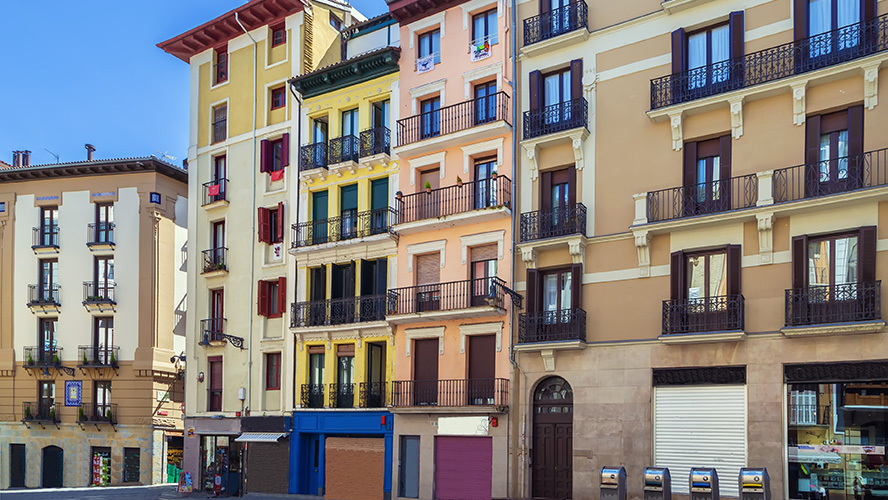
The Goyeneche Palace is one of the major historical buildings on Calle Estafeta. It is an 18th century Baroque palace with its original façade on Calle Estafeta (where you can see its coat of arms), which leads to the Plaza del Castillo square and towards the Bajada de Javier Street. It belonged to the Goyeneches, a noble family from Baztán (Navarre).
The fact that this street is world famous is due mainly to the running of the bulls, although Estafeta’s fame is also due to a large number of bars and restaurants where you can go out for pintxos or eat traditional Navarran dishes such as the famous Navarran asparagus, piquillo peppers stuffed with cod, lamb with chilindrón stew, and pocha beans with chistorra sausage.
Running of the bulls
From 6 to 14 July, the dates on which the San Fermín fiestas are held, Pamplona is transformed into another city to welcome the hundreds of thousands of tourists who come from all over Spain and other parts of the world to enjoy the festive atmosphere and the running of the bulls.
If there is one thing the San Fermín festival is known for, it is the running of the bulls. The event, which consists of running in front of six fighting bulls from Corral de Santo Domingo to the bullring, has been known as the encierro since 1856, when Calle Estafeta began to form part of the route on the occasion of the inauguration of the bullring, which is located at the end of Calle Estafeta and is where the runners and the bulls arrive after running for 846 metres. The running of the bulls used to be called entrada and the route ended in the Plaza del Castillo, which became a bullring.
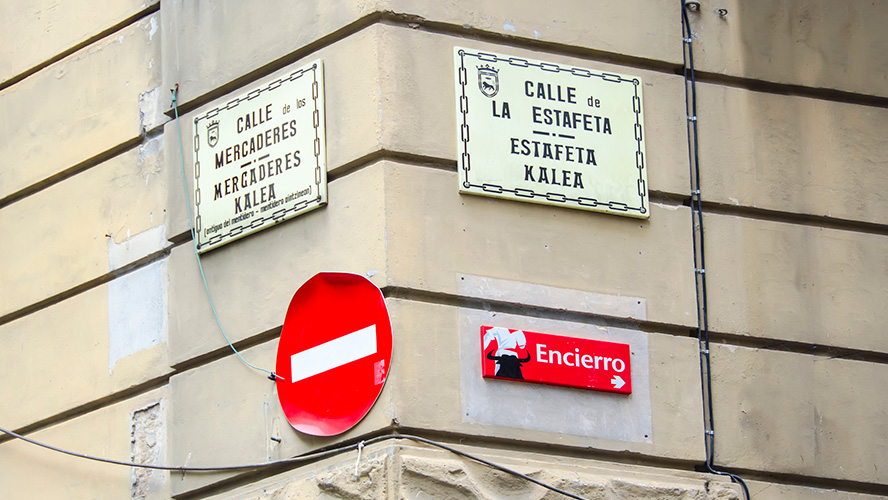
The running of the bulls takes place along the streets of Pamplona’s Old Quarter. At eight o’clock in the morning, the bulls leave the Cuesta de Santo Domingo. They then pass through the Plaza Consistorial square, Calle Mercaderes and Calle Estafeta, and end up in the bullring. The current route respects that of the late 18th century (the bull run tradition has its origins in the Middle Ages, but it was in the 16th century when butchers and young men began to run in front of the bulls defying the competent authorities).
The running of the bulls at Calle Estafeta starts in the form of a bend, with a 90-degree turn to the right, at the intersection with Calle Mercaderes, and this is one of the most dangerous stretches of the whole route. There, the bulls often slip and collide with the wooden fences where the fans crowd together. They then follow this narrow road until it ends at the bullring, in the section known as Telefónica.
Food and drink
The people of Pamplona typically go out for tapas or, as many Basques and Navarrans say, they go out for pintxos or poteo (drinks). Pamplona’s Old Quarter is the most popular destination for this, together with excellent wine from the Navarra appellation and Patxaran liqueur for dessert.
Specifically, the Plaza del Castillo and San Nicolás, Calle Mercaderes and Calle Estafeta (and neighbouring ones) are where you should go to try the Navarran cuisine. In addition to the famous asparagus, piquillo peppers stuffed with cod, lamb with chilindrón stew and beans with chistorra sausage, which are some of the most traditional dishes, tourists can try fried squid slices, croquettes, octopus dishes, foie pintxos, puff pastries and other haute cuisine tapas.
Sundays are the busiest days for drinks but on Thursdays there is also the juevintxo (combination of jueves, i.e. Thursday in Spanish, and pintxo), when you just pay two euros for a pintxo and a drink (either wine or zurito, i.e. a glass of beer).
Estafeta Street has a number of bars, so it is relatively easy to stroll along the street and pick one to satisfy your hunger or lick your lips with traditional dishes and pintxos.
To highlight a few, Bodegón de Sarriá (at number 50) provides an extensive variety of pintxos, dishes and casseroles. You can identify the bar from the outside by the Serrano ham legs hanging from the ceiling. Right next door, at number 40, is Restaurante Zampa, where there is also a broad variety of pintxos and quality local food. Finally, at number 58, you will find Bar Fitero which, according to its website, ‘is the best pintxos bar on the famous Calle Estafeta.




































































